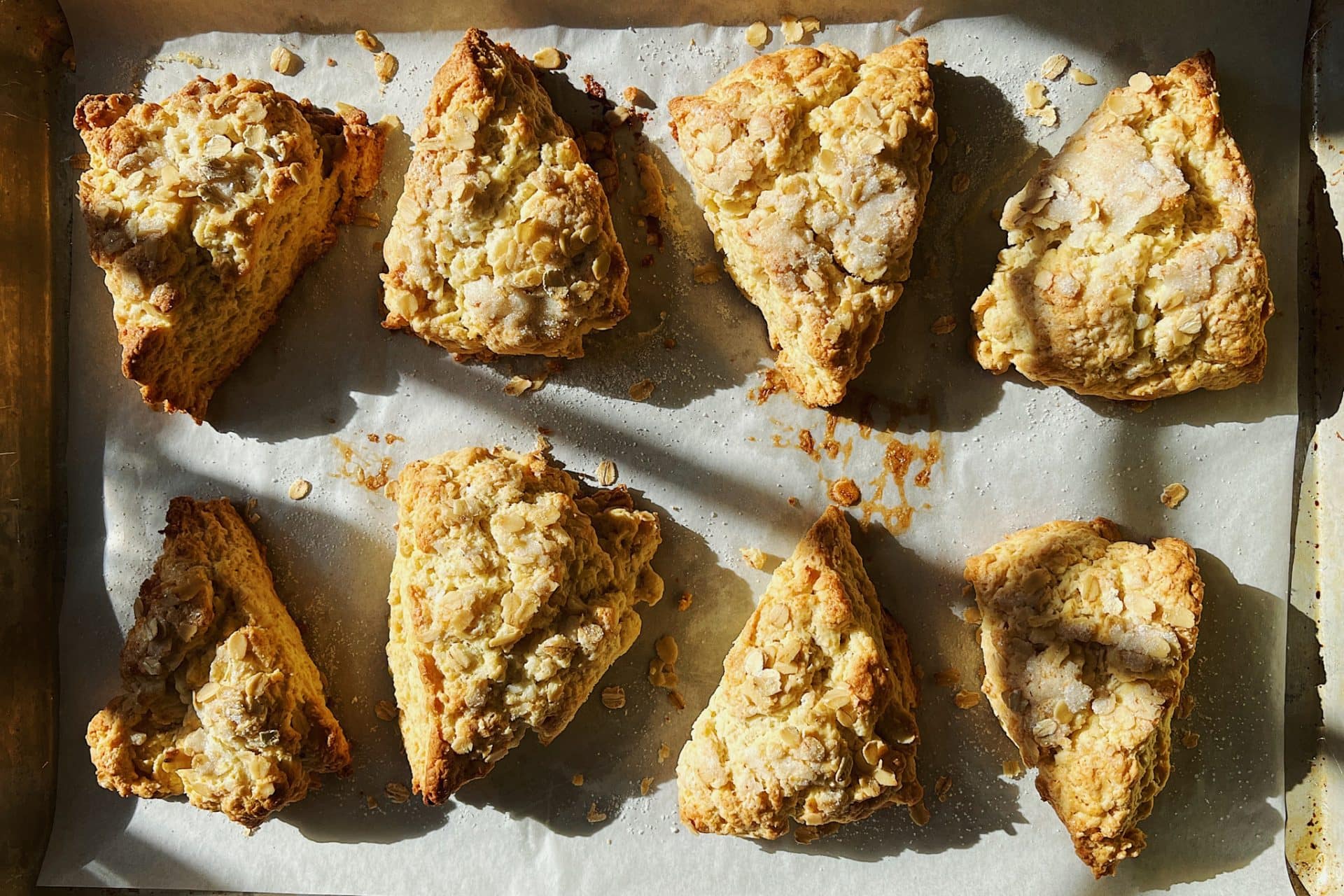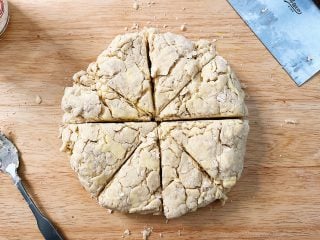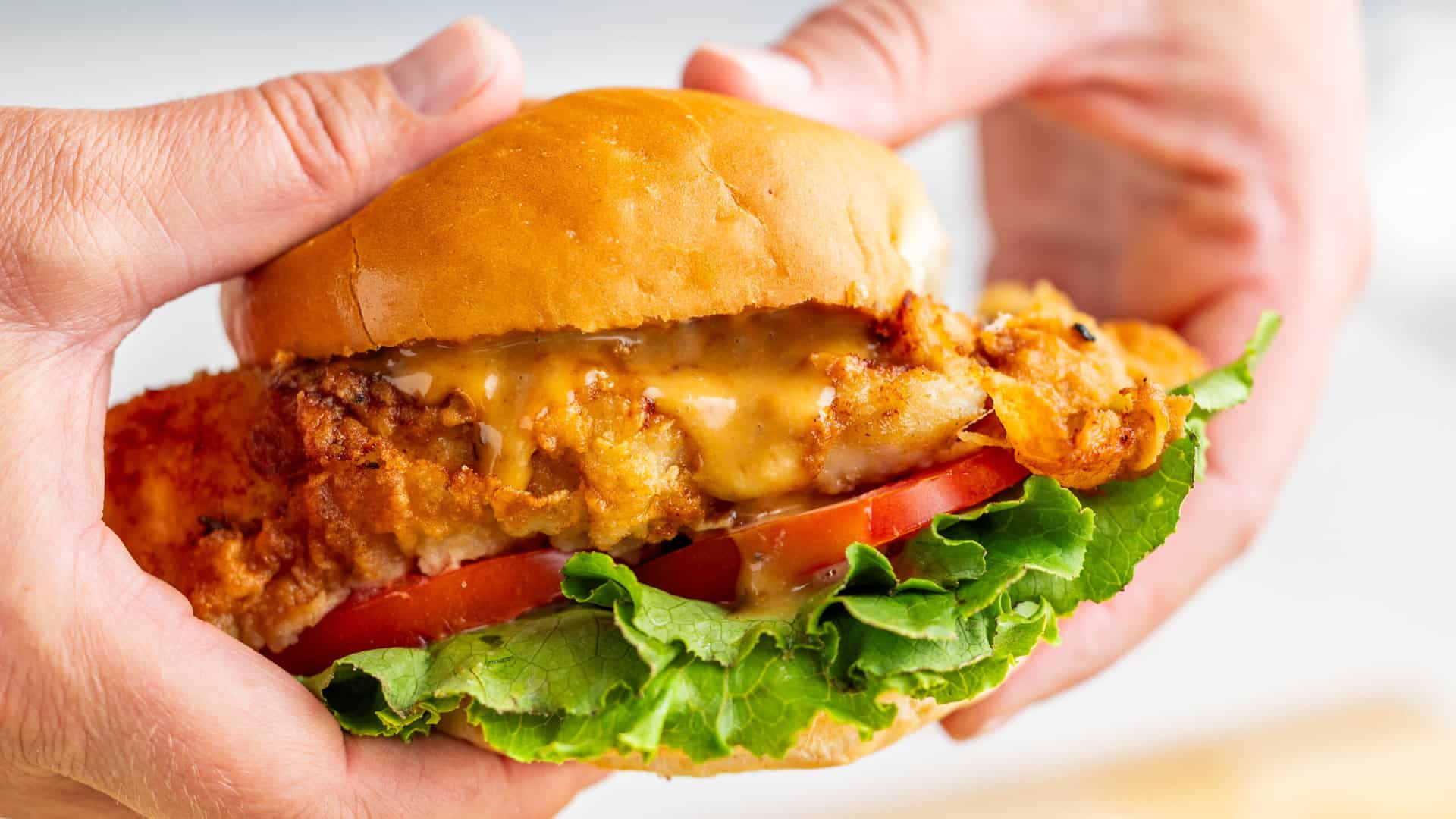A freshly-baked scone is a really particular breakfast. My choice is a butter- and cream-based wedge that’s tender and crumbly, pillowy-light, and barely candy. These sourdough starter discard scones are moist sufficient to be loved on their very own, sans unfold, however aren’t overly wealthy or candy when unfold with butter and jam. That is achieved by holding the components record (and flavors) easy. And naturally, as their identify suggests, there’s one tangy addition to this scone dough: a full cup of sourdough starter discard.
To make a profitable sourdough starter discard scone recipe, we’ll scale back some—however not all—of the water and flour that seems in such a recipe. After taking part in round with eradicating completely different quantities of the varied water-contributing components (cream, egg, and butter), it was clear that, like every other sourdough recipe, a profitable starter discard recipe shouldn’t be the results of utilizing as a lot of the ingredient as potential. Starter discard actually shines in a recipe when simply sufficient is added to lend a delicate tang.
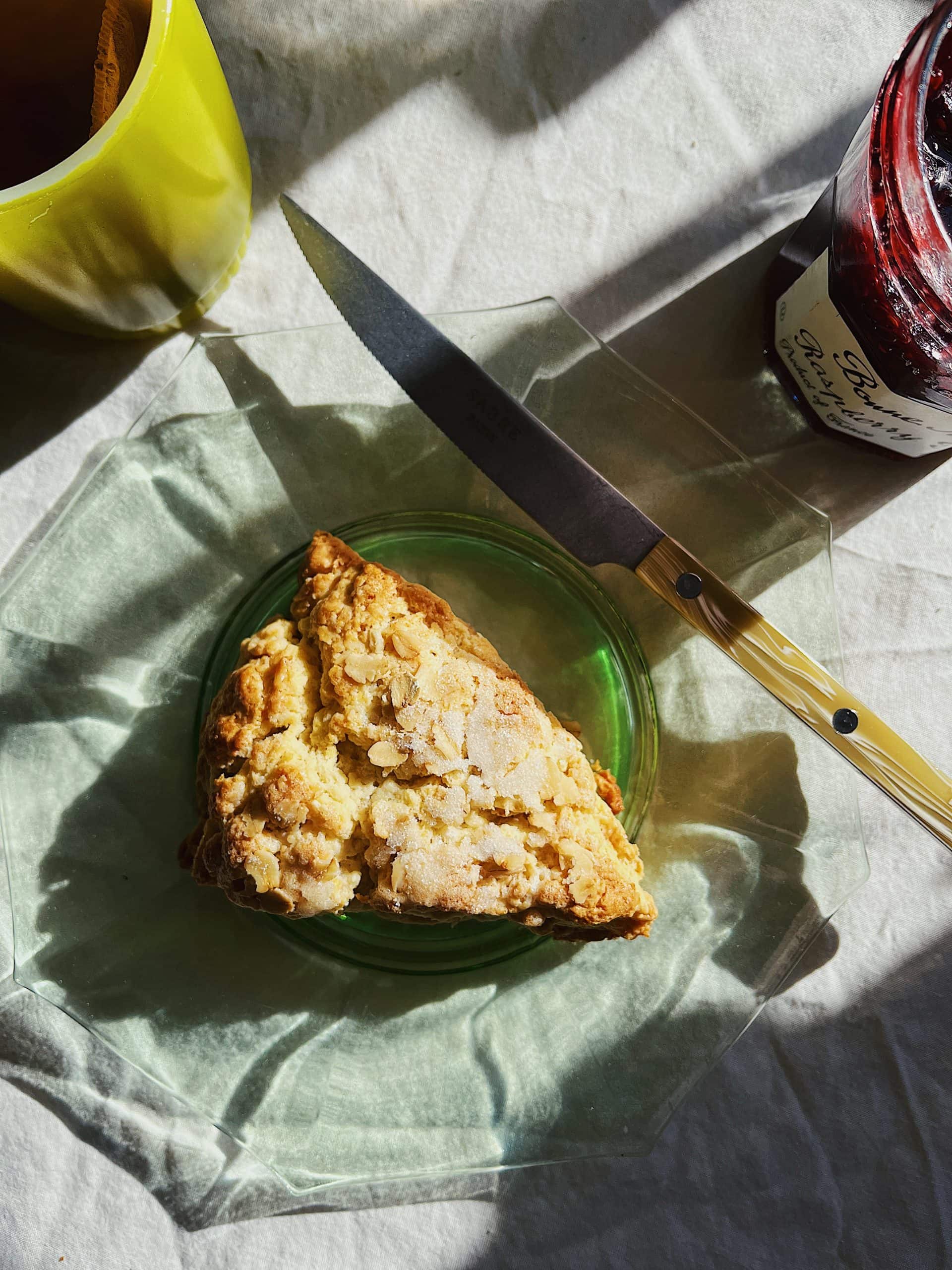

Use Unfed Discard Straight from the Fridge
These scones get their elevate from loads of baking powder, aka a chemical leavener, so that they don’t want ripe, extra-active sourdough starter. Subsequently, unfed sourdough starter discard straight from the fridge will work completely on this recipe.
To Take away Extra Water, Use Egg Yolk and Much less Dairy
Sourdough starter discard is fermented flour and water in equal elements by weight. In an effort to embody starter discard in a dough, some plain flour and water wanted to be omitted. Flour is simple sufficient after all; however water is tricker, as scone recipes don’t have a tendency to incorporate pure water, so we’ve got to search for it inside different moist components.
Some scone recipes don’t name for egg, whereas others say the principle distinction between a biscuit and a scone is in truth eggs’ addition. As a result of I used to be seeking to take away water from the dough so as to add within the starter discard, and eggs have fairly a little bit of water, I naturally formulated the recipe round using one complete egg. Eradicating one massive egg’s 35-gram white (about 90% water) meant I may add 70 grams of starter discard, or 35 grams every of water and flour, so naturally I went for it, leaving the yolk to contribute fats to the dough.
To take away extra water from the recipe, I checked out different dairy typically included in scones, particularly butter and milk merchandise, which have various levels of water content material. Whereas most scone recipes that decision for butter additionally incorporate milk or buttermilk, some are made solely with cream and no butter. I personally discover that each butter and cream deliver essentially the most priceless textures and flavors to a scone: Butter for craggy-crisp edges and flaky layers, cream for a wealthy taste and extra-tender inside.
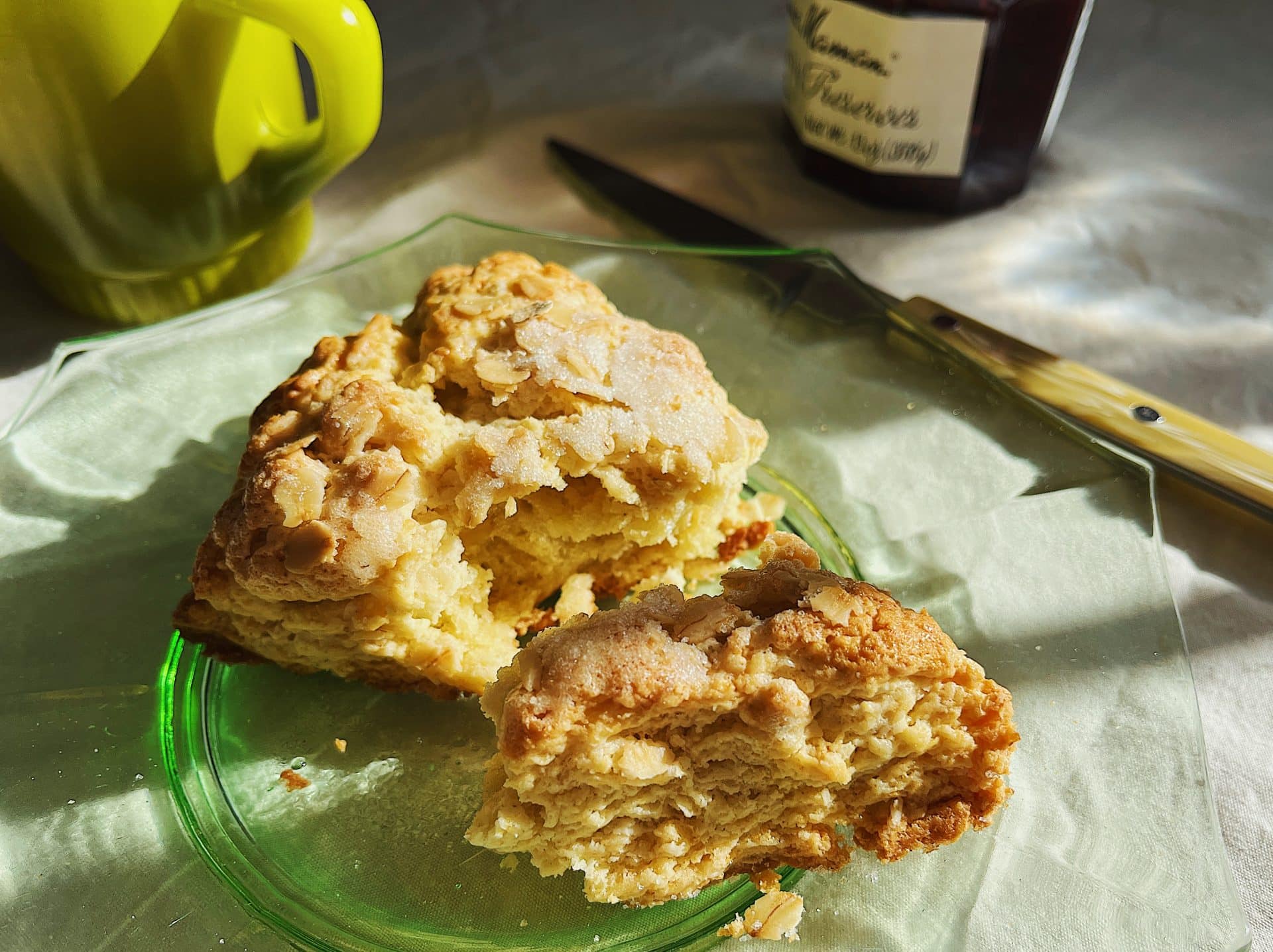

As a result of scones come out as pillowy as potential when utilizing very chilly components, particularly fats, and the easiest way to take away water from butter is by melting it (as demonstrated on this starter discard sugar cookie recipe), I opted to not take away any water from the butter. Might I’ve eliminated water from the butter by way of melting (primarily making clarified butter), re-chilled it, after which used it within the dough? Positive, however that might’ve added fairly a bit to the recipe time, and I merely didn’t wish to try this to any hungry bakers. After a number of exams with cream as the extra dairy, it was clear that because the cream was considerably decreased, the scones misplaced among the richness that makes a cream scone so fascinating. Moreover, these minimal-cream scones had fairly a bit extra tang. I landed on “eradicating” some, however not all, of the cream, including as much as one other 150 grams of sourdough starter discard.
That’s a complete of 220 grams, or 1 cup of sourdough starter discard.
Why Use Grated Butter?
For flaky, tender scones, you want small pockets of chilly butter. The butter slowly melts within the oven for tenderness, and generates steam to assist with rise. Whilst you may lower in butter along with your fingers or a pastry blender as you would possibly do in pie dough, grating butter on a field grater creates completely sized items that you simply’ll merely toss into the dough to disperse, no slicing wanted.
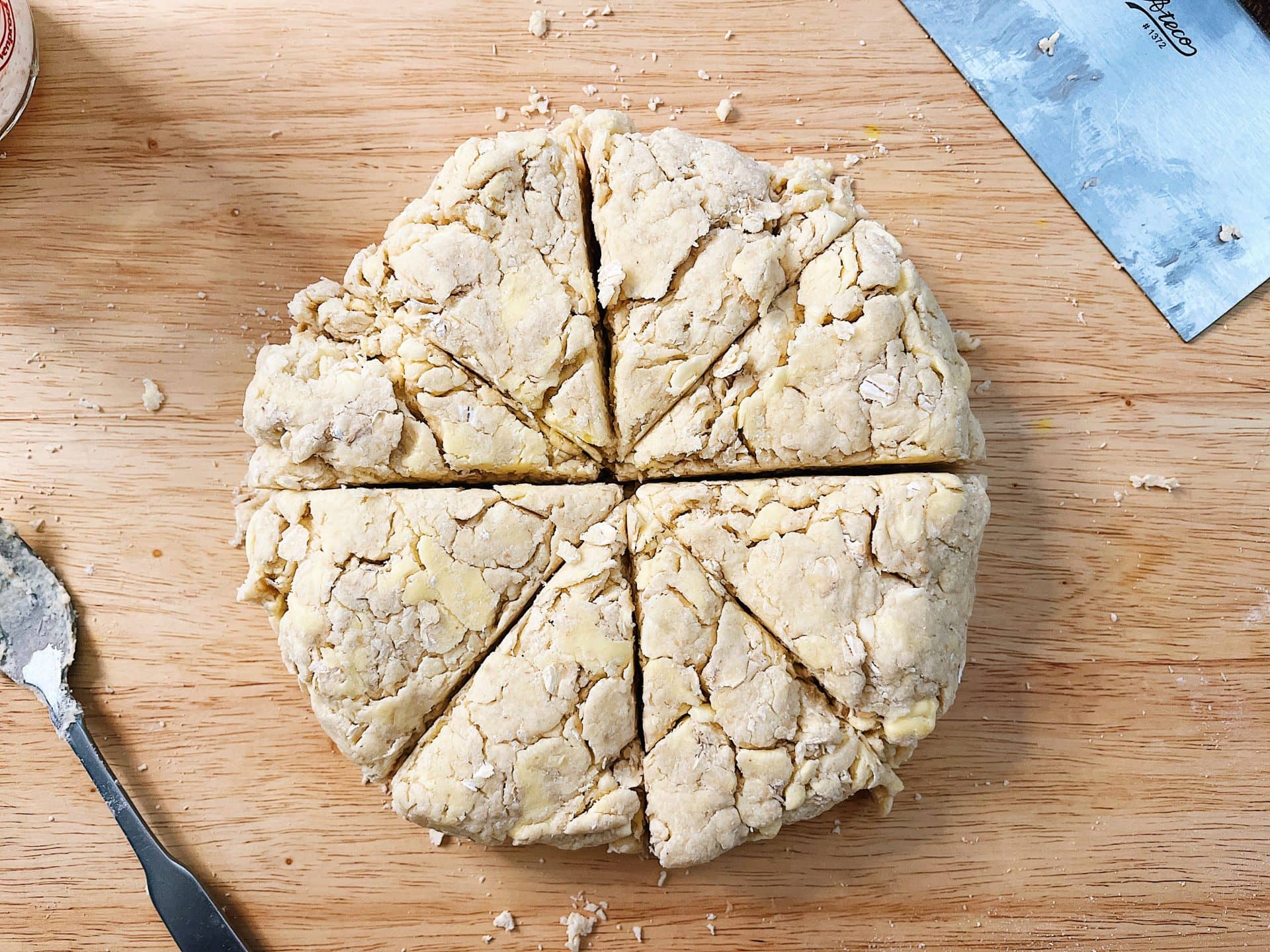

Methods to Freeze Sourdough Scones (Baked or Unbaked)
In case you have numerous starter discard within the fridge that you simply wish to dissipate, make two (or extra!) batches of scones and freeze them, baked or unbaked. Scones style finest when baked recent from uncooked dough, however reheated frozen scones are nothing to show up your nostril at.
In relation to baking frozen uncooked scones or reheating frozen scones, the standard will begin to degrade (barely) after 1 month, and extra noticeably after 2 months, so I don’t advocate holding both for greater than 2 months.
For freezing unbaked scones: After slicing the scone wedges, place on a parchment-lined sheet pan (you’ll be able to freeze multiple batch per tray, simply guarantee there’s no less than ¼-inch of area between every scone) and freeze till stable, about 2 hours. Wrap every scone in plastic wrap, then place the scones in a big freezer-safe container or bag. Retailer within the freezer for as much as 2 months. Once you’re able to bake, place as much as 8 frozen scones on a parchment-lined sheet pan, brush with further cream and sprinkle with oats and sugar per the recipe, then bake at 375ºF (190ºC) for 30 to 40 minutes.
For freezing baked scones: Let the scones cool fully, then wrap every scone in plastic wrap. Place in a big freezer-safe container or bag. Retailer the scones within the freezer for as much as 2 months. Once you wish to reheat, place nonetheless many scones you’d like on a sheet pan (no must line it or fear about spacing them evenly as they gained’t stick, and have already expanded through the bake). Defrost at room temperature for 1-2 hours or in a single day within the fridge. Reheat defrosted scones in a 350ºF (177ºC) oven till warmed via, about 10 minutes.
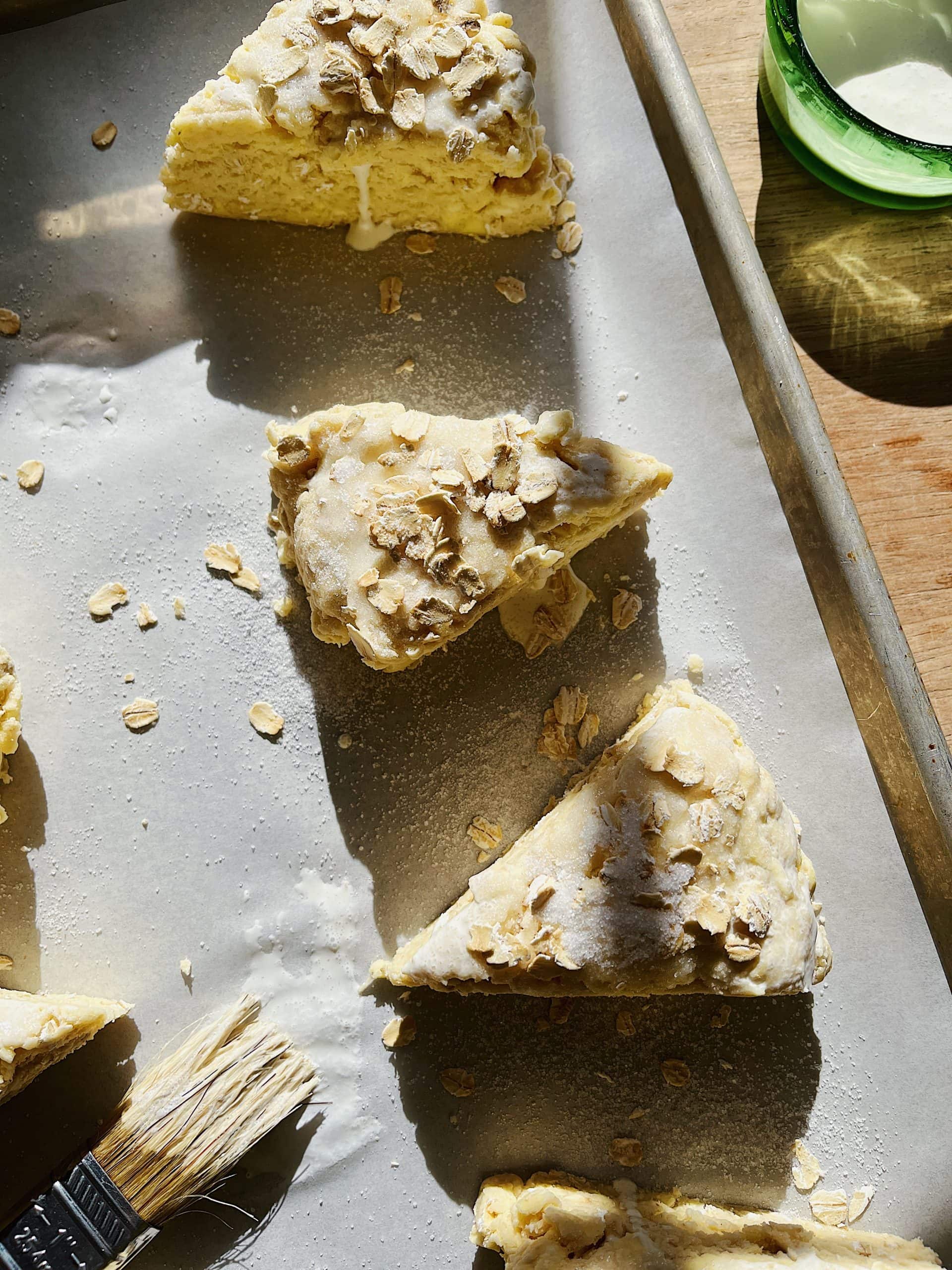

Description
Tender cream scones come along with kitchen staples—together with your sourdough starter.
- 140 grams (10 tablespoons) unsalted butter, chilly
- 114 grams (½ cup) heavy cream, chilly from the fridge, plus extra for brushing
- 220 grams (1 cup) sourdough starter discard (100% hydration, unfed, ideally chilly)
- 14 grams (1 massive) egg yolk, chilly from the fridge
- 257 grams (2 cups plus 1 tablespoon) all-purpose flour
- 67 grams (⅓ cup) granulated sugar, plus 25 grams (2 tablespoons) for topping
- 37 grams (¼ cup) rolled oats, plus 19 grams (2 tablespoons) for topping
- 16 grams (4 teaspoons) baking powder
- 2 grams (½ teaspoon Diamond Crystal or ¼ teaspoon Morton) kosher salt
-
Use the massive holes of a field grater to grate the butter. Switch to a small bowl and place within the freezer till it goes into the dough.
-
In a medium bowl, whisk collectively the heavy cream, the discard, and egg yolk till easy. Place within the fridge till it goes into the dough.
-
Line a sheet pan with parchment paper.
-
In a big bowl use a fork to mix the flour, 67 grams (⅓ cup) sugar, 37 grams (¼ cup) oats, baking powder, and salt. Use the fork to toss the grated butter to coat within the flour combination (no must work within the butter any greater than this), then stir within the cream combination till simply mixed. Knead the dough within the bowl a number of instances to deliver it collectively.
-
Dump the dough onto a piece floor and pat it collectively to kind a roughly 2-inch tall disk. Minimize the disk into 8 wedges. Prepare the wedges evenly on the ready sheet pan. Freeze the scones till agency, about half-hour or as much as 8 hours. If not baking after 8 hours, wrap the scones in plastic wrap, then place in a freezer-safe bag. Freeze for as much as 2 months.
-
Once you’re able to bake, preheat the oven to 375ºF (190ºC) with a rack positioned within the middle. Brush every scone with a bit extra cream, then sprinkle with 19 grams (2 tablespoons) oats, then 25 grams (2 tablespoons) sugar.
-
Bake till the scones are puffed and deeply golden, 22 to 27 minutes (if baking scones which have been frozen for greater than 8 hours, they could want an extra 5 or so minutes.) Let cool on the sheet pan for five minutes earlier than devouring, or cool fully.
-
Retailer in an hermetic container at room temperature for as much as 2 days; or wrap individually in plastic wrap and a freezer-safe bag and freeze for as much as 2 months. Reheat room temperature scones in a 350ºF (177ºC) oven till warmed via, about 10 minutes; defrost frozen, baked scones for 1 hour at room temperature or in a single day within the fridge first, then heat via.
Notes
Add as much as 1 cup recent, frozen, or dried fruit (use small fruit like blueberries or raisins; chop something bigger into ½-inch items), candied ginger, or chocolate chips to the batter after including the cream combination.
Substitute as much as 50% of the all-purpose flour with complete wheat flour.
Key phrases: Sourdough discard, sourdough, Pastry, Cream, Oats
Sourdough Starter Discard Scones FAQ
Can I exploit a ripe sourdough starter discard?
Whereas using chemical leavener within the recipe eliminates the necessity for a ripe, lately fed sourdough starter, you should utilize it if that’s what you might have. Chilled components, together with starter discard, assist obtain a young, flaky texture, however because the scones get a 30-minute freeze earlier than baking, you should not have any bother if utilizing room temperature starter discard.
Can I scale back or enhance the sourdough starter discard quantity on this recipe?
So that you solely have ½ cup of sourdough starter discard, however you actually wish to make these scones. Properly, you’re in luck! Simply enhance the cream and flour ratios a bit: with 110 grams (½ cup) starter discard, you’ll want 170 grams (¾ cup) heavy cream and 313 grams (2 ½ cups) all-purpose flour. The scones will probably be barely extra wealthy, and barely much less tangy—no drawback in my guide.
Technically talking, you may in all probability exchange all of the cream on this scone recipe with the liquid in sourdough starter discard. With a lot much less milkfat, the ensuing scones would lose loads of richness, and style fairly tangy, bordering on savory. Is {that a} dangerous factor? Not essentially! Simply one thing to remember. All of which is to say: Be happy to mess around with the ratio, holding in thoughts that as you add starter discard by eradicating cream, you’ll want to scale back an equal weight of flour from the recipe.
Can I add fruit or different flavorings to those scones?
Sure! You’ll be able to add as much as 1 cup recent, frozen, or dried fruit (use small fruit like blueberries or raisins; chop something bigger into ½-inch items), candied ginger, or chocolate chips. Add them to the batter after the cream combination.
You may as well add taste by way of spices or citrus zest. Strive 1 gram (½ teaspoon) floor cinnamon or cardamom, combined in together with the dry components. Or use as much as 12 grams (2 tablespoons) of grapefruit, lemon, or orange zest: Take advantage of the flavour by including it to a small bowl with the sugar, then rubbing the combination collectively along with your fingers till the sugar is barely moistened, then observe the recipe as written.
Can I make these scones with complete wheat flour?
Sure! Entire wheat flour provides a barely nutty taste and heartier texture to scones. Whereas changing the entire all-purpose flour with complete wheat may end up in a denser scone, you’ll be able to swap in as much as 50% complete wheat flour.
Can I skip the 30-minute freeze earlier than baking scones?
Don’t skip it! Freezing the scones helps immensely with rise: Chilled butter melts extra slowly, which causes the scones to bake up tall and flaky, and the gluten within the flour has a while to loosen up, holding the scones tender.
What’s Subsequent
For extra methods to place your sourdough starter discard to make use of, see our starter discard recipes.
